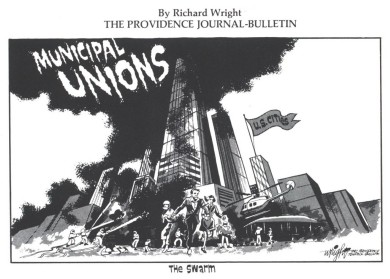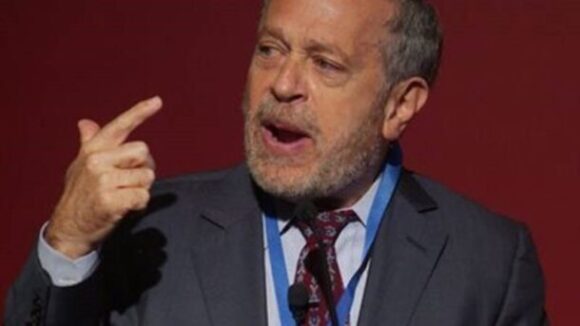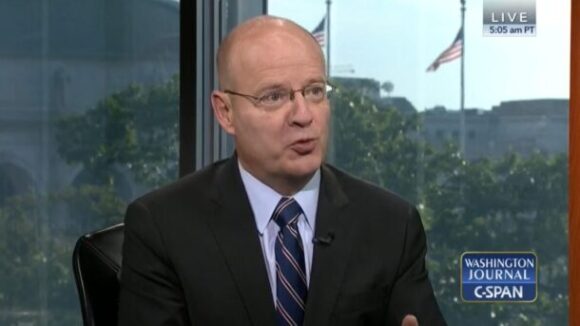Will Team Biden Weaponize Workers’ Pensions?
Big Labor abuse of worker pension and benefit funds as a means of advancing union bosses’ self-aggrandizing policy objectives is a familiar phenomenon.
 The Washington Examiner finds there are 19 cities with larger government worker to population ratios than Detroit where city workers accounted for the largest employer:
The Washington Examiner finds there are 19 cities with larger government worker to population ratios than Detroit where city workers accounted for the largest employer:
Detroit declared bankruptcy due in no small part to $3 billion in unfunded public employee pensions owed a sprawling city workforce that kept growing even as the city’s population shriveled, but aWashington Examiner analysis found that 19 major American cities have even bigger ratios of such workers to residents.
The Examiner used the Census Bureau’s 2011 Annual Survey of Public Employment and Payroll to rank every U.S. city with a population of 200,000 or more.
Some of those cities managed to get along fine with comparatively few municipal employees, such as San Diego, which has 1,112 employees for 244,000 residents, or one for every 219 residents.
But others like San Francisco had a bureaucracy seven times as large, with one of every 28 of the city’s 800,000 residents on the city payroll.
Remarkably, the Census Bureau excluded from these figures all teachers and education professionals, which make up the largest group of local government employees.
The figures also do not include separate government divisions that comprise significant portions of many urban public workforces, like the 1,200-employee Baltimore City Housing Authority, the 1,000-employee Philadelphia Housing Authority and the 2,300 employee Chicago Park District.
Transit systems, such as the 9,500-worker Chicago Transit Authority and New York’s 7,000-person Port Authority, are also not counted.
What’s more, seven of the 19 cities with larger relative workforces than Detroit paid workers more than twice as much as the Motor City did its employees.
In different places, levels of government have different cost-sharing arrangements, with the state, county and special taxation districts for services like sewage picking up part of the tab, so these figures represent somewhat less than all of the government employees for which residents of a jurisdiction support with tax dollars.
That also means that a simple comparison of city workforces — especially between cities in different states — doesn’t always show the full picture.
Washington, D.C. ranks first in the nation, which is no surprise to residents who recall the dramatic growth of the municipal workforce in the 1980s under then-mayor Marion Barry, who created hundreds of new positions to help reduce unemployment and encourage growth of a black upper-middle class.
But D.C. also has the distinction of providing services that in many other places are often split among multiple levels of government, including state, local and county authorities.
The District’s status as the national capital makes the burden on other cities all the more dramatic, cities like Baton Rouge, with one in 30 residents a city employee; Richmond, at one in 39; Denver, with one in 49; Cleveland and St. Louis, at one in 50; and Philadelphia and Atlanta with one in 51.
Philadelphia’s city council president this week began pushing a plan to use part of a 1-percent sales tax hike to pay for city worker pensions, which are significantly underfunded.
Some cities such as Rochester have, like Detroit, seen dramatic population losses without commensurate reductions in the city workforce, illustrating what many see as government’s tendency always to grow bigger, without ever losing wasteful or obsolete programs.
San Francisco’s 28,660 workers, with an average compensation of $179,000, come in a long tail of different job categories, including 2,000 health employees — not including city hospitals –1,843 welfare workers, 2,872 judicial and corrections officers, 1,081 parks workers, and 1,171 in “other government administration.” The city by the bay’s 4,266 transit workers do not include Bay Area Rapid Transit employees presently striking for a 21 percent pay increase.
The city with the leanest government is Bakersfield, Ca., which has 1,410 employees for 348,000 residents, or one for every 246. The city’s population has quadrupled in the last 40 years, and its public employee workforce may have lagged behind. The city is one of California’s most conservative and the largest that employs the lowest sales tax allowed by state law.

Big Labor abuse of worker pension and benefit funds as a means of advancing union bosses’ self-aggrandizing policy objectives is a familiar phenomenon.

What impact does handing a union monopoly power to deal with your employer on matters concerning your pay, benefits, and work rules have on your pay?

Facing state prosecution for violating City employee’s rights under 2018 Janus US Supreme Court ruling, IBEW stops dues seizure & issues refund to Chicago 911 operator